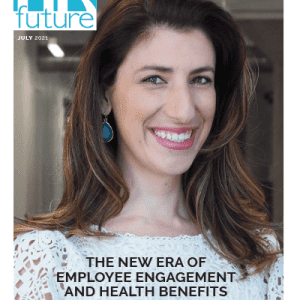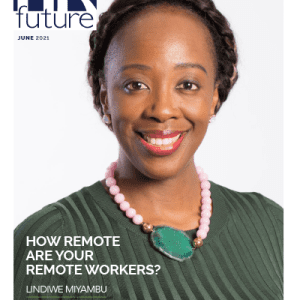For South African corporate companies, March/April marks the beginning of a new fiscal year, which means that it is time to take stock of their company’s productivity,
performance and profitability over the past 12 months and put plans in place to enhance and increase these going forward. A good starting point would be to examine a company’s current employees and potential staffing needs – after all, successful companies depend on people as a resource for sustainable, competitive advantage.
Business leaders need to determine whether they are happy with their current staffing status quo or if there may be a need to adjust it in order to be more successful during the forthcoming fiscal year. Those that decide to increase their staff compliment, should consider whether pursuing contingent or permanent employees would be suitable for their business.
Contingent staffing can refer to: just-in-time staffing in the event of planned or unplanned absenteeism; replacing workers whilst are on maternity or paternity leave; the employment of staff as and when required; the use of temporary staff with a maximum tenure of three months or with a definite end date less than 12 months and the outsourcing of temporary, permanent or fixed-term contractors from a recruitment agency.
Below are some of the trends taking place in the recruitment of contingent and permanent employees:
1. Contingent staffing trends:
Contingent staffing is one of the top trends in workplaces across the world with HR Times reporting that the contingent workforce has doubled in the past seven years and estimating that by 2020, 40% of the average company’s workforce will be composed of contingent workers.
The growing popularity of hiring skilled and suitable workers – as and when businesses need them – is unsurprising, given that they allow companies to adapt quickly to both internal and market conditions. It is also an attractive and cost-effective way of addressing a growing skills gap whilst continuing to deliver needed business growth.
Within contingent staffing, there are a number recruitment trends emerging. These include its appeal to millennials and the need for amending recruitment procedures accordingly.
With their desire for flexibility and a work-life balance coupled with aspirations of progressing swiftly up the corporate ladder, Millennials are the ideal candidates to take on contingent employment.
Recruiting them requires tapping into their preferred method of communication, namely social networking. In fact, according to LinkedIn’s Recruiting Trends 2016 for South Africa, 56% of professionals turn to social professional networks when looking for new opportunities. According to Pew Research Center, 40% of job seekers use their smartphone to search and apply for jobs. Consequently many organisations are looking at making the application process mobile-friendly and enabling candidates to apply for the position with the push of a few buttons.
In addition, Millennials are multi-skilled and bringing this into their work pays off for both employer and employee. A trend recognised for keeping them challenged and motivated, while also utilising their various skills, is that of dual job descriptions such as Customer Service Advisor/Technology Developer. As contingent workers, it allows them to work across different job descriptions and industries.
Employers looking to hire contingent workers need to be grab the attention of this talent pool who are always on the lookout for projects and clients that fit their skill set. This means that they may need to adjust their recruitment procedures to make them simpler, shorter and more easily accessible.
With contingent workers having the power to shape the perceptions that potential candidates will have of an employer, based on critical or inspirational reports of their experiences, organisations are also placing greater emphasis on engaging with and rewarding these workers as part of their recruitment efforts.
2. Permanent staffing trends:
Despite the take off in contingent staffing, the need for permanent employees persists and is necessary for fulfilling a company’s core competencies. Permanent employees also form part of the overall culture and business operations.
Although South Africa has a huge unemployment rate, many companies report that there is a lack of skilled talent available. What this means is that there is fierce competition amongst companies to attract and retain the few candidates equipped with the requisite capabilities out there.
To ensure that companies are seen as the ‘best choice’ amongst all of the hiring competition, they need to pay attention to their employer brand. This refers to the views that current and potential employees have of an organisation and entails figuring out how to effectively communicate the company’s values, personality and culture to create the desired perceptions.
In addition, the perceived shortage of skilled talent in the market has resulted in many companies looking to hire internally. Not only does this assist with employee retention, but also ensures that people with the right competencies and an established track record are in appropriate positions.
While the incentive of receiving training is also very attractive recruitment tool, other trends emerging include offering perks to potential permanent employees. These include opportunities to work remotely and at flexible times as well as the provision of progressive workplaces that include gyms, coffee shops, lounges and even health and beauty spas for employee use.
To ensure the availability of top talent on demand, a growing number of companies are proactively connecting with talent well before the need arises. This is known as talent pipelining and is a method adopted by a number of the world’s top organisations. Not only does this assist companies in identifying the right talent early on, but also reduces the time to hire.
Both permanent and contingent staffing solutions offer benefits to businesses, but it is important that one does not replace the other. Businesses need to carefully judge which positions need to be filled by permanent workers and which that are only in demand over certain periods in order to plan accordingly. Companies should take advantage of these emerging trends to ensure that they have the right balance of skilled staff on board at all times in order to be successful in the new financial year.
Kay Vittee is the CEO of Kelly.


























